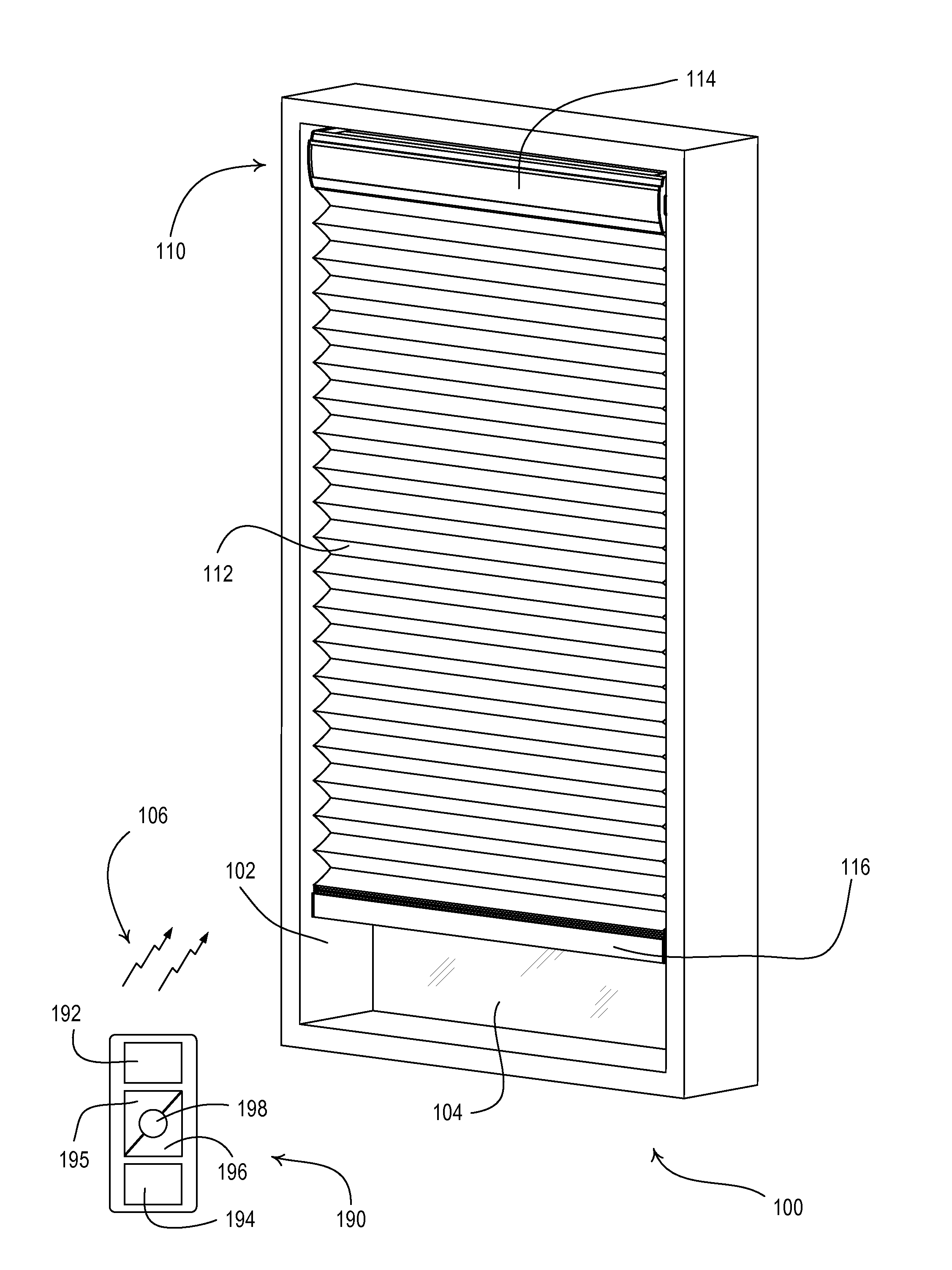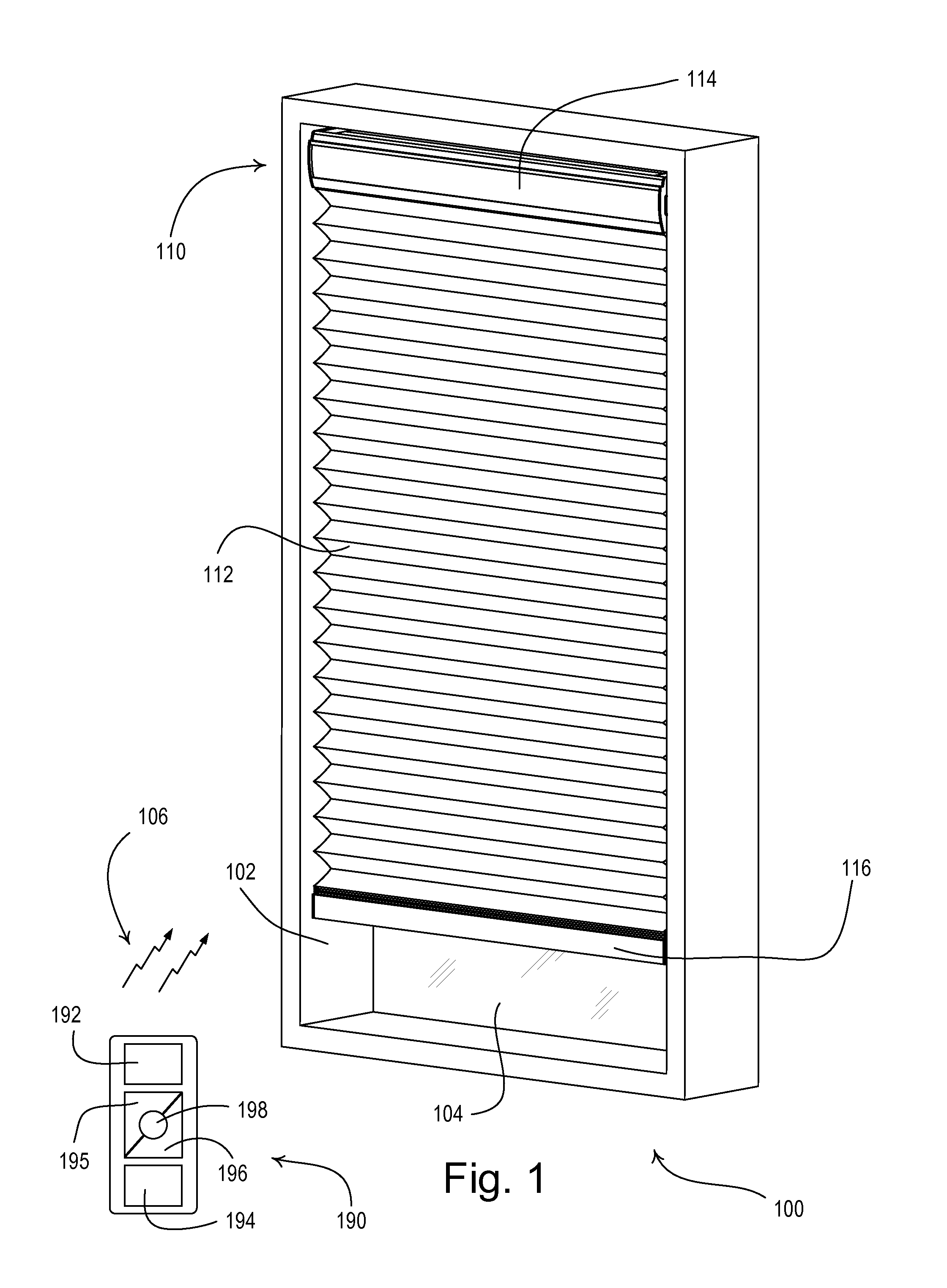Motorized window treatment
a motorized and window treatment technology, applied in the direction of door/window protective devices, high-level techniques, shutters/movable grilles, etc., can solve the problems of requiring subsequent repair, high cost of running additional ac main line voltage wiring to the electronic drive unit, and unsatisfactory aesthetics, so as to increase and lower the covering material, not to achieve the effect of longer (and more practical) li
- Summary
- Abstract
- Description
- Claims
- Application Information
AI Technical Summary
Benefits of technology
Problems solved by technology
Method used
Image
Examples
Embodiment Construction
[0044]The foregoing summary, as well as the following detailed description of the preferred embodiments, is better understood when read in conjunction with the appended drawings. For the purposes of illustrating the invention, there is shown in the drawings an embodiment that is presently preferred, in which like numerals represent similar parts throughout the several views of the drawings, it being understood, however, that the invention is not limited to the specific methods and instrumentalities disclosed.
[0045]FIG. 1 is a perspective view of a motorized window treatment system 100 having a battery-powered motorized window treatment 110 mounted in an opening 102, for example, in front of a window 104. The battery-powered motorized window treatment 110 may comprise a covering material, for example, a cellular shade fabric 112 as shown in FIG. 1. The cellular shade fabric 112 may have a top end connected to a headrail 114 and a bottom end connected to a weighting element 116. The h...
PUM
 Login to View More
Login to View More Abstract
Description
Claims
Application Information
 Login to View More
Login to View More - R&D
- Intellectual Property
- Life Sciences
- Materials
- Tech Scout
- Unparalleled Data Quality
- Higher Quality Content
- 60% Fewer Hallucinations
Browse by: Latest US Patents, China's latest patents, Technical Efficacy Thesaurus, Application Domain, Technology Topic, Popular Technical Reports.
© 2025 PatSnap. All rights reserved.Legal|Privacy policy|Modern Slavery Act Transparency Statement|Sitemap|About US| Contact US: help@patsnap.com



